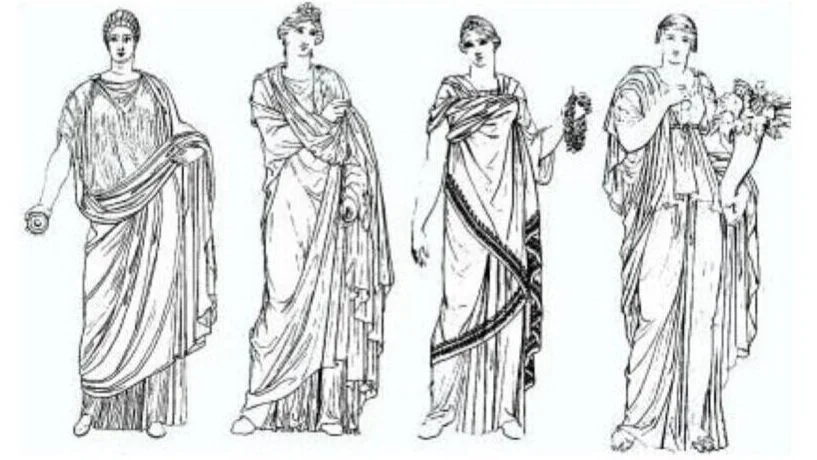WOMEN AND PATRIARCHY SERIES
THE TROJAN WOMEN:
Women and Fashion in the Ancient World
By Debbi Hobson
PTE Resident Costume Designer
One can see the manner in which women were viewed by their society if one looks back at the garments they wore, and specifically the undergarments. Ancient Rome had a very clear class system in place where women were placed according to at first their father, and then their husband. The clothes that they wore were closely tied to this placement in society.
Undergarments were not at all what we think of in regards to bras, corsets, girdles, etc. However, even in Ancient Rome, unattainable body standards were very prevalent. In Ancient Rome large breasts were viewed as comical as well as a sign of aging, so women and developing girls would bind their breasts using a garment called a strophium. A strophium was a band of linen or leather folded and tucked around the chest to bind and reduce the size of a woman’s breasts. Young girls would wear this undergarment with the belief it would stop their breasts from becoming too large, and women would wear it to have the appearance of small firm breasts. This was also used by women when exercising as it was more comfortable in the highly physical sports that they played. There is a very famous mosaic in Sicily commonly known as the “Bikini Girls” that is one of the best examples of art that depicted women exercising. Also of interest is that men would exercise nude, but that was not considered acceptable for women.
Strophium
Bikini Girls
As far as clothing goes, the garment we most closely associated with ancient Rome is the toga. Worn draped around the body and tossed over one shoulder or arm, this garment can be seen on many classical statues and depicted in many paintings in every museum throughout the world. But you will only ever see it on men. If a woman wore a toga in ancient Rome it announced to all around that she was a prostitute. And while sex workers have at various, and extremely few, times in history had been tolerated within their societies, they have rarely ever been fully be accepted. Such as it was in ancient Rome.
What women wore and how they wore it in ancient Rome allowed those around them to know the woman’s class, marital status, and sometimes family affiliation. And that society could deny you the privilege to wear those garments should you lose your money, or your husband. The garment that all women aspired to wear was a stola, a simple and beautiful dress like garment that was held together across the shoulders with tiny clasps or pins, and a girdle may be worn around the waist to show the figure. Wearing a stola signalled to your community that you were a respectable, married woman. Until a girl was married, she was not considered much more than property whose value must be maintained by her father. The stola was presented to the girl in a ceremonial fashion that was considered a very important moment in her life.
Over the stola, a long wrap or scarf called a palla would be wrapped and folded around the figure to highlight the most attractive parts of the woman. The fabrics and colors of these garments would all convey to those who saw them who they were within society.
Stolas and Pallas
Simple Tunic
Within the Trojan Women, one could imagine the added layer of degradation for the women as their high born stolas and pallas could have been removed from them by their captors, should those men decide that the added humiliation was something that they wished to torture the women with as the women wereparcelled out to become slaves and concubines. As the entire world would see them stripped not only of their status, but of their dignity, the women would be forced to wear simple woollen tunics, with not more than perhaps a belt around the waist. They would all be placed on the same low level and their background and breeding would be erased by the simple act of taking away their garments.





